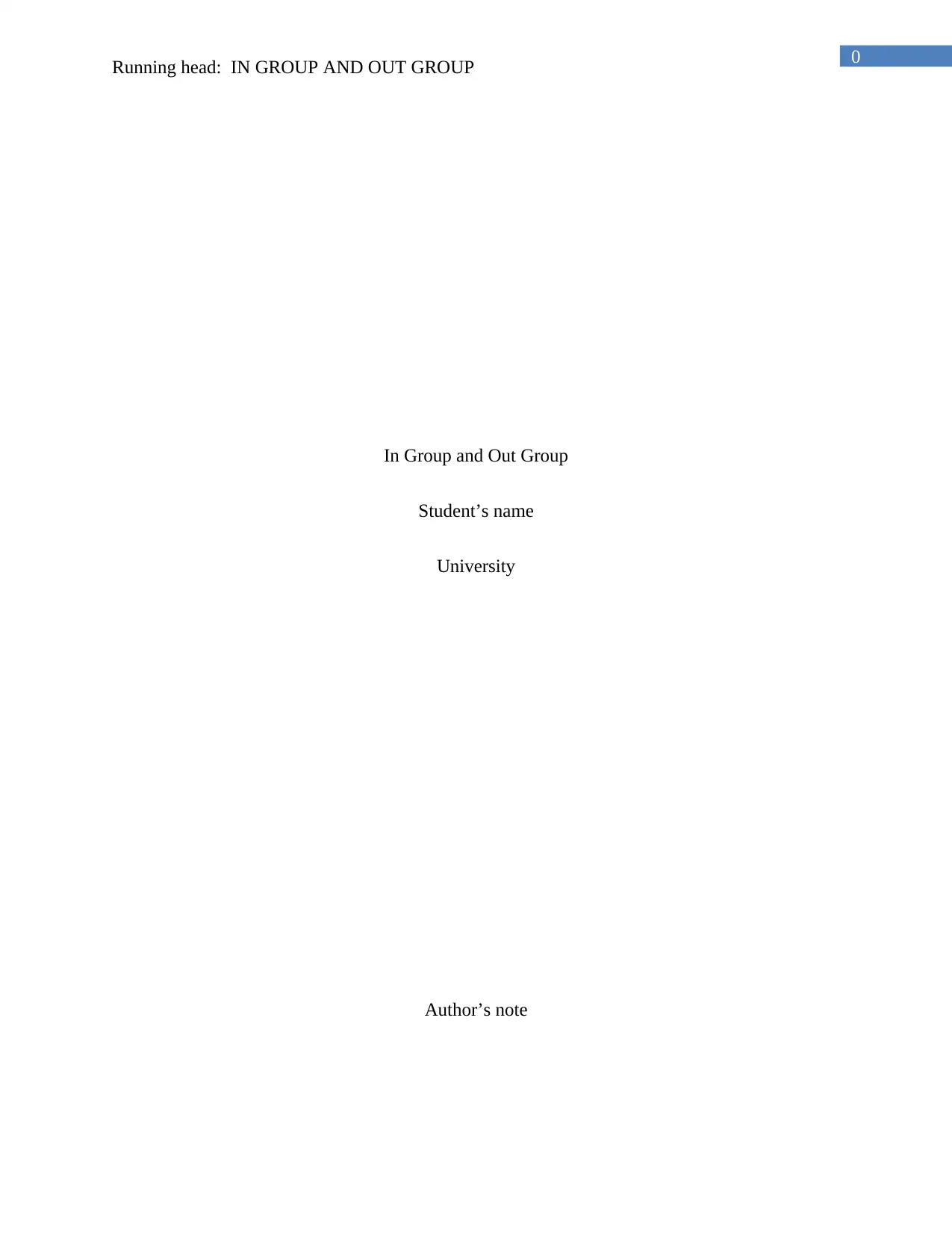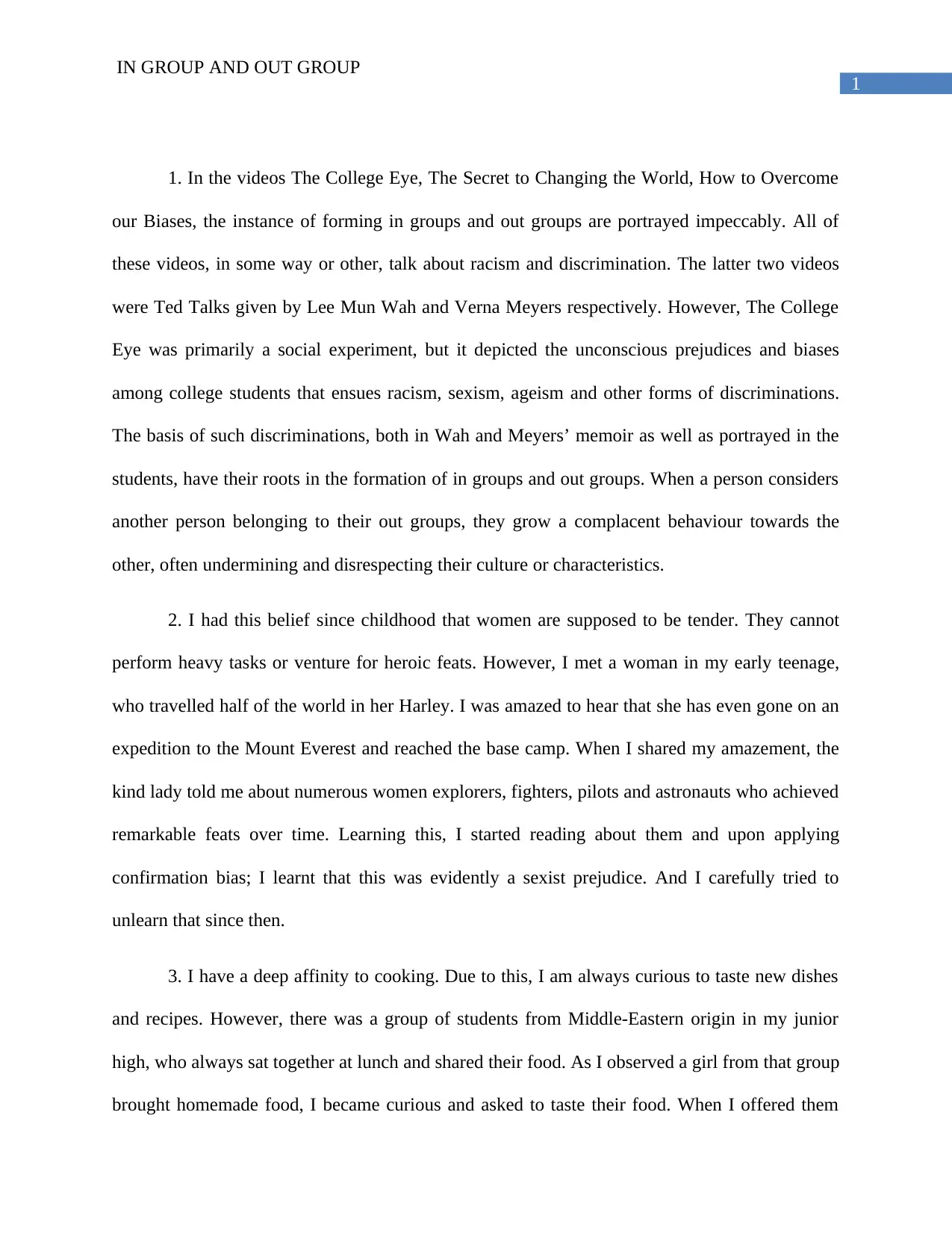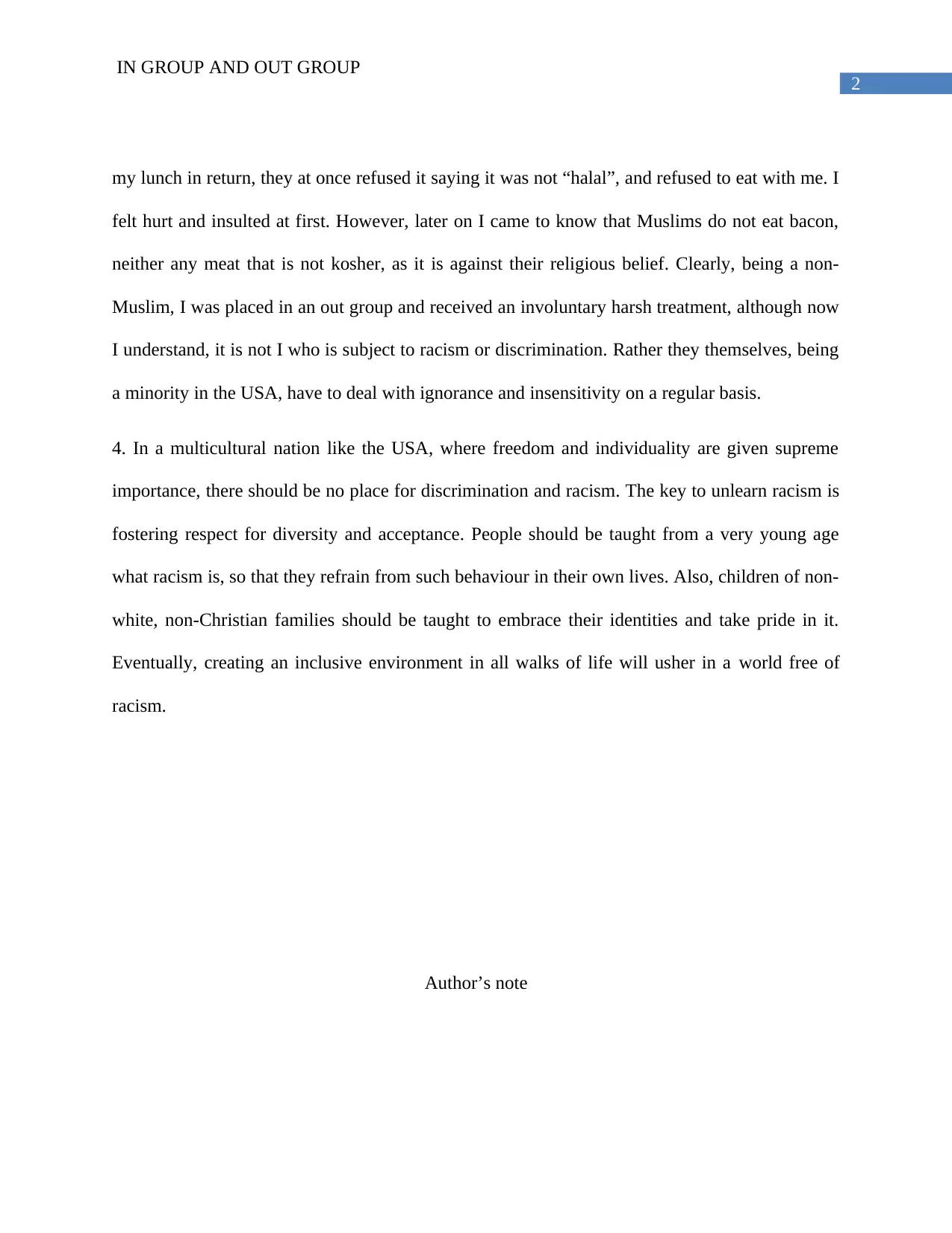Exploring In Group and Out Group Dynamics: A Psychology Analysis
VerifiedAdded on 2022/08/28
|3
|647
|16
Essay
AI Summary
This essay delves into the psychological concepts of in-groups and out-groups, examining how these dynamics contribute to biases, racism, and discrimination. The author begins by referencing videos that highlight these issues, such as those discussing racism and discrimination. Personal anecdotes are used to illustrate how in-group and out-group affiliations can lead to prejudice and the formation of stereotypes. One instance involves the author's initial assumptions about women and another describes an experience with cultural differences and food preferences. The essay concludes by advocating for the importance of diversity, acceptance, and education to combat racism and foster an inclusive environment in multicultural societies like the USA. The author emphasizes the need to teach respect for differences from a young age and to instill pride in diverse identities to create a world free from discrimination. The essay provides insights into human behavior and offers possible solutions to overcome biases.
1 out of 3




![[object Object]](/_next/static/media/star-bottom.7253800d.svg)